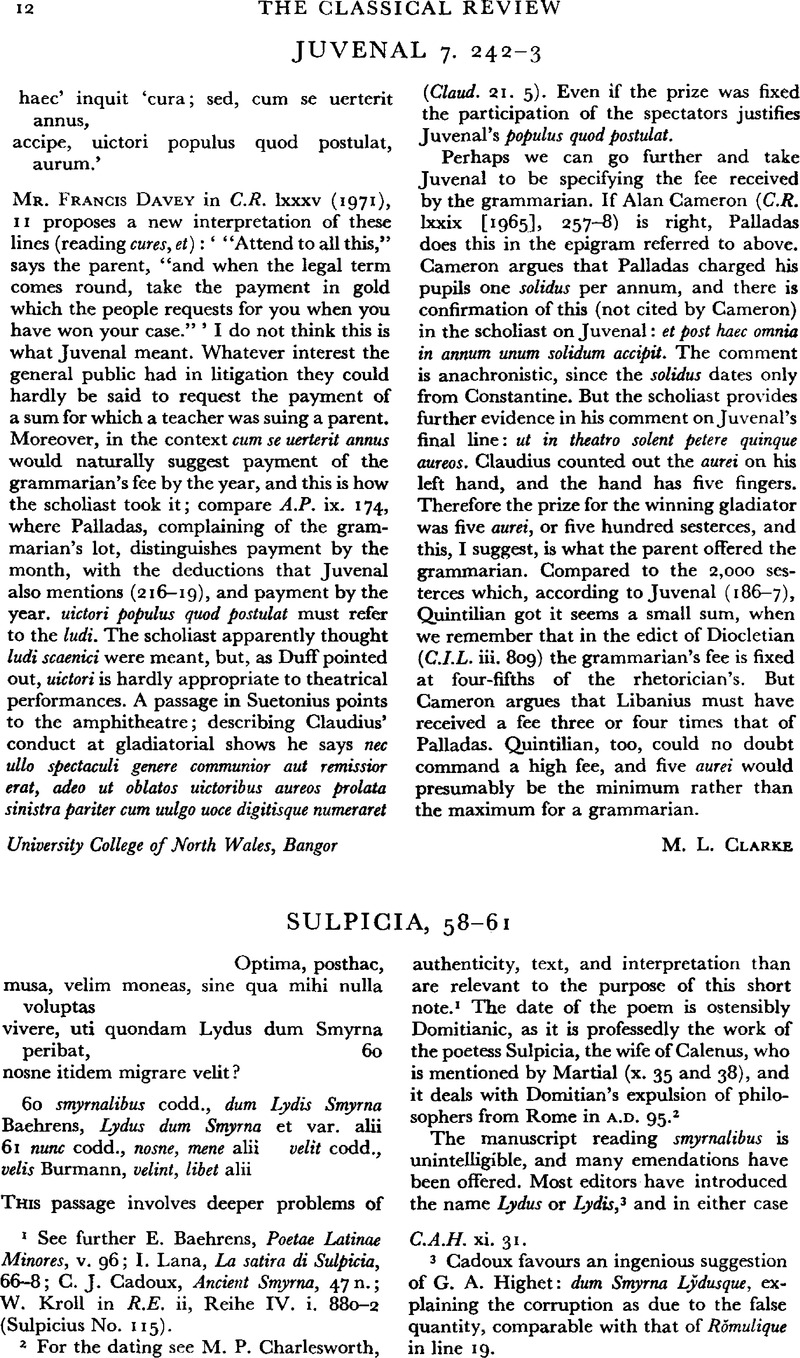No CrossRef data available.

page 12 note 1 See further Baehrens, E., Poetae Latinae Minores, v. 96;Google ScholarLana, I., La satira di Sulpicia, 66–68;Google Scholar C. J. Cadoux, Ancient Smyrna, 47 n.; W. Kroll in R.E. ii, Reihe IV. i. 880–2 (Sulpicius No. 115).
page 12 note 2 For the dating see Charlesworth, M. P., C.A.H. xi. 31.Google Scholar
page 12 note 3 Cadoux favours an ingenious suggestion G. A. Highet: dum Smyrna Lydusque, explaining the corruption as due to the false quantity, comparable with that of Rŏmulique in line 19.
page 13 note 1 So Kroll, col. 882. Cadoux, however, favours allusion to Hdt. i. 94.
page 13 note 2 See further the reports in Anatolian Studies, and cf. F. and H. Miltner, ‘Bericht über eine Voruntersuchung in Alt-Smyrna’, Öst. Jahresh. xxvii (1932), Beiblatt, 127–90.
page 13 note 3 Ael. Arist. xxi. 436 Dindorf; cf. xv. 371, xx. 427.
page 13 note 4 B.M.C. Ionia, Smyrna, No. 346, etc. Cf. Paus. vii. 5. 1–3; Ael. Arist. xxi. 431–2, etc.
page 13 note 5 The reading velis would be easier than de velit, whose subject is not clear. I should be inclined to accept the difficult manuscript text here, understanding Domitianus. There is no grammatical antecedent for this, and in fact the emperor is not named at all, but he is in mind throughout the context, and the supposition well fits the harsh and disjointed style. Domitian is then compared with Alyattes (if we accept Lydus) as instigator of the migration.